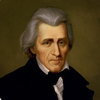Decennial Census Historical Facts
Decennial Census Historical Facts
Censuses are not conducted in a vacuum. They occur amidst internal and external crisis, shifts in cultural interests, and events that become "defining moments" for each decade. Census data reflect the growth of the population as well as the changing values and interests of the American people.
Decennial Historical Facts provides a portrait of the United States both statistically and culturally in the following four areas:
- Pop Culture – key milestones from the decade following the census.
- Population
- Census Details
- 10 Largest Urban Places
1830
ICONS: Emily Dickinson, Andrew Jackson, La Amistad



Population
| 12,860,702 | U.S. Resident Population |
| 7.4 |
Population per square mile of land area |
| 33.5 |
Percent increase of population from 1820 to 1830 |
| 24 |
Number of States |
10 Largest Urban Places
| Rank |
Place |
Population |
|---|---|---|
| 1 |
New York City, NY | 202,589 |
| 2 |
Baltimore, MD | 80,620 |
| 3 |
Philadelphia, PA | 80,462 |
| 4 |
Boston town, MA | 61,392 |
| 5 |
New Orleans, LA | 46,082 |
| 6 |
Charleston, SC | 30,289 |
| 7 |
Northern Liberties township, PA | 28,872 |
| 8 |
Cincinnati, OH | 24,831 |
| 9 |
Albany, NY | 24,209 |
| 10 |
Southwark district, PA | 20,581 |
The 1830 Census
| Cost | $12,860,702 |
| Cost per Capita (cents) | 7.4 |
| Total Pages in Published Reports | 214 |
| Number of Enumerators | 1,519 (43 office staff) |
| Census Bureau Director | Martin Van Buren |
| Number of Questions on the Questionnaire | 12 |
| Number of Questions on the Long Form | N/A |
Pop Culture
- Poet Emily Dickinson is born on December 10, 1830, in Amherst, MA.
- In 1831, Alexis de Tocqueville and his friend Gustave de Beaumont spent nine months touring America. The book that de Tocqueville wrote following the trip, Democracy in America, is published in 1835.
- The first reported bank robbery in U.S. history occurs at the City Bank of New York on March 19, 1831.
- Democrat Andrew Jackson is re-elected president over his opponents, gathering 216 electoral votes to National Republican candidate Henry Clay's 49.
- The first attempted assassination of a U.S. president (Andrew Jackson) fails when Richard Lawrence's gun misfires on January 30, 1835.
- Cyrus McCormick patents "Improvement in Machines for Reaping Small Grain" (a horse-drawn grain reaper) on June 21, 1834.
- P.T. Barnum begins his first circus tour of the United States on June 2, 1835.
- The Mexican Army and militia (loyal to Texas) battle for the Alamo from February 23 to March 6, 1836, in San Antonio, TX. Less than 2 months later (April 21), the Texans capture Santa Anna at the Battle of San Jacinto and kill approximately 650 Mexican soldiers.
- Following months of increasing inflation and shrinking credit, the Panic of 1837 begins, causing widespread bank failures and unemployment.
- During 1838, the forced removal of 15,000-17,000 Cherokee Indians from Georgia on the "Trail of Tears" results in an estimated 4,000-8,000 deaths.
- Charles Goodyear invents vulcanized rubber in 1839.
- On July 2, 1839, Sengbe Pieh and 56 fellow Africans mutiny aboard the ship La Armistad enroute to Cuba. The ship is captured off Long Island, NY, and the resulting U.S. Supreme Court case rules that since the importation of slaves into the United States had been prohibited since 1808, the mutineers are to be freed.
- Edgar Allen Poe publishes The Fall of the House of Usher in the September 1839 edition of Burton's Gentleman's Magazine.
Page Last Revised - October 8, 2021




